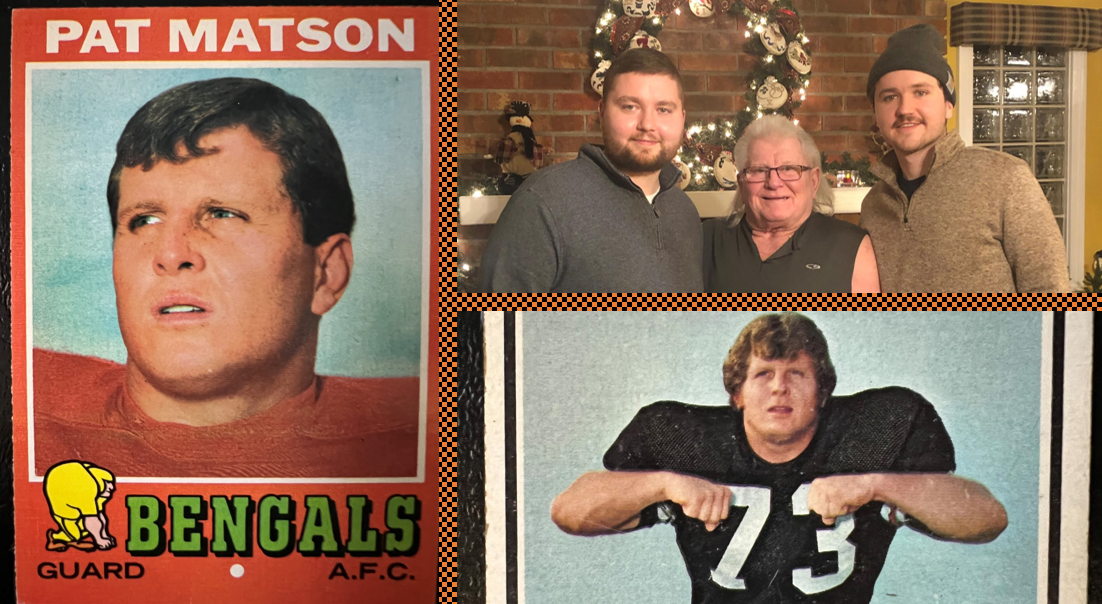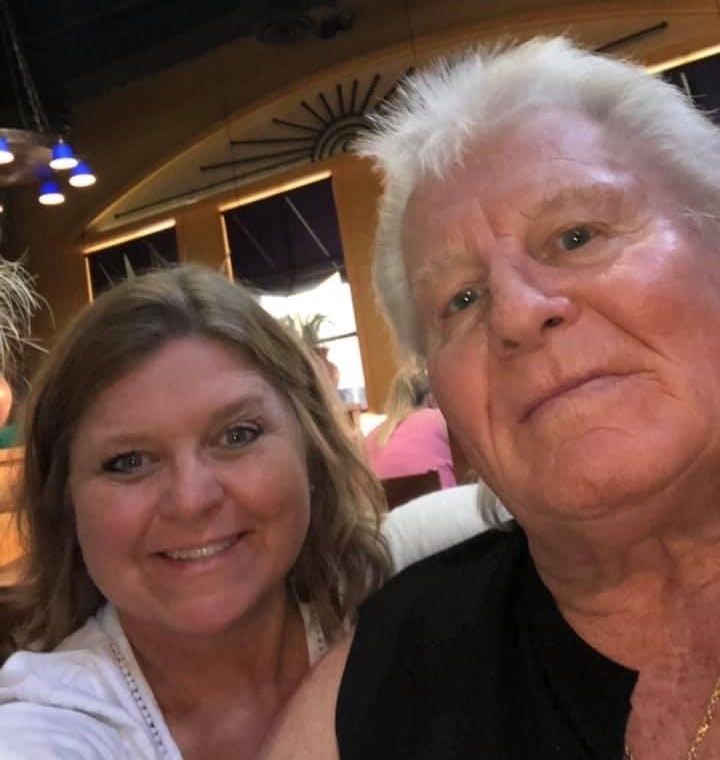
If the Cincinnati Bengals win the Super Bowl this weekend, it will be a first for the team. And it will be a particularly special victory for Pat Matson, a rehabilitation resident of CarDon & Associates’ senior living community, Aspen Trace, in Greenwood, Indiana. Pat has experienced many firsts in the field of football. In 1966, he was “the first local boy to ever play with the Denver Broncos,” and in 1968, he was drafted to play for the Bengals as an offensive guard in the team’s inaugural season.
Pat has stories that would make any football buff light up. Highlights from his time with the Bengals include facing off against iconic quarterback Johnny Unitas in a playoff game with our home team — what was then the Baltimore Colts. That same year, 1970, the Bengals became part of the NFL, which the team’s coach, Paul Brown, helped shape. Among other things, he came up with the idea of building face shields into helmets and assigning different coaches to lead offense and defense. Pat filled the “messenger guard” role that Brown created to have certain players deliver his game plans to the team.
“He was a very innovative guy, and I had a great deal of admiration for him,” Pat said. “But I was a little scared to be around him during the 1974 players’ strike.”
Pat’s teammates elected him to serve as their representative that year in what became a 44-day strike dedicated to fighting for better pay along with better disability insurance, injury protection and widows’ benefits. But some coaches saw the strike as an attack.
“Paul said, ‘Matson, you’re trying to ruin football!’” Pat said, imitating his former coach’s gruff voice and then chuckling. “It took guts to go up against him because he’d bite your head off. But it was our obligation to look out for the players, their health and their families.”
This was long before the days of players being paid astronomical salaries. In fact, Pat ran a gym during the offseason to earn some extra income to support his family.
“During the strike, all the players would come work out at my gym,” he said. “It was great to be together and build camaraderie outside of the game.”

Pat retired from football after being traded to the Green Bay Packers and playing in the team’s 1975 season.
Unfortunately, part of what brought Pat to Aspen Trace involves wear and tear from the numerous surgeries he’s had to treat the injuries sustained during his 10-year football career. But he feels like he couldn’t be in better hands.
“All of the staff members here are very knowledgeable and pleasant,” he said.
Pat points to one physical therapist in particular named Archie Tan, who has been “a great motivator” — not unlike a great coach.
“Dad likes him and talks about him a lot,” said Shannon McKee, Pat’s daughter. “One of the other nice aspects of Aspen Trace is that it’s very close to where I live, so it’s easy to visit Dad.”
This Sunday, Shannon will be heading to the community to watch the big game with Pat and join him in cheering on his former team.




